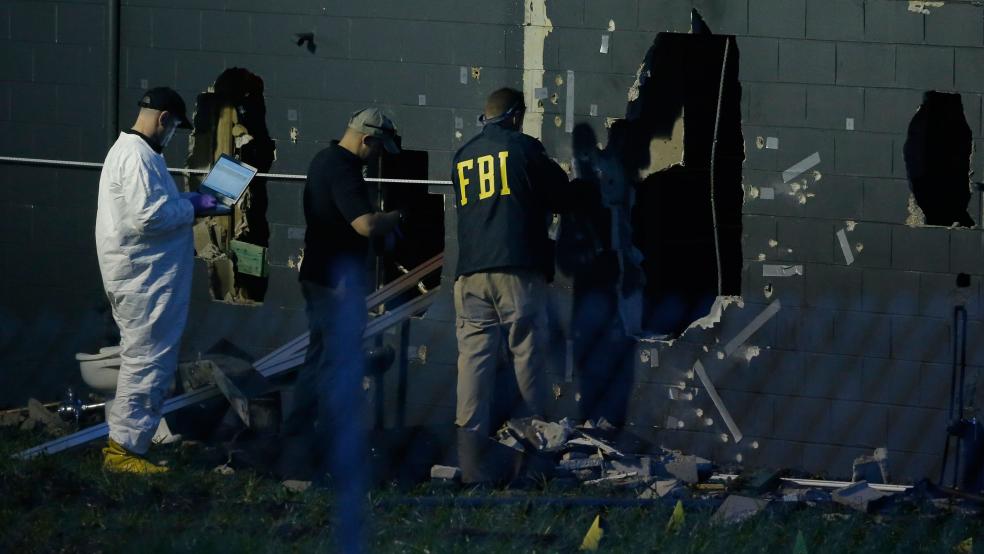Multiple motivations may have been at play in the Orlando killer’s attack at the Pulse night club in Orlando this week. While it is possible to overstate the influence of the Islamic State, it is impossible to ignore ISIS messaging as at least one contributing factor. On Tuesday President Obama said that the killer “appears to have absorbed” messages from ISIS, whose propaganda, “videos, their postings are pervasive and more easily accessible than we want.” If the online world is part of the battlefield, a new Pentagon program is building tools to evaluate how the battle is going.
“From phony news on Web sites to terrorist propaganda on social media to recruitment videos posted by extremists, conflict in the information domain is becoming a ubiquitous addition to traditional battlespaces. Given the pace of growth in social media and other networked communications, this bustling domain of words and images—once relegated to the sidelines of strategic planning—is poised to become ever more critical to national security and military success around the globe,” reads the program description for the Quantitative Crisis Response, or QCR, from the Defense Advanced Research Projects Agency, or DARPA.
Related: The Pentagon Rolls Out Its Latest Stealth Weapon: Motorbikes
DARPA posted the program description this week, several days after Michael Lumpkin, director of the State Department’s Global Engagement Center, or GEC, revealed the program in an interview with Defense One.
“Many tools are available today to reveal whether rockets and bombs hit their targets or otherwise achieved their tactical goals. But no such tools are available to rigorously assess the effects of the volleys of information that are traded through social media and other communications channels,” reads the description.
The new program seeks to develop “automated digital tools that can help operational partners better understand how information is being used by adversaries and to quantitatively predict and assess—in real time and at scale—the effects of those campaigns and of countermeasures.”
In other words, it seeks to better understand how information propaganda from groups like ISIS is working, as well as the effectiveness of counter responses.
Related: Is the Navy Abandoning the Railgun?
The program’s director is Wade Shen, a former associate group leader in the Human Language Technology Group at MIT’s Lincoln Laboratory, where he worked on ways to distinguish one person’s language patterns from another. At DARPA, he’s served as a program manager for the MEMEx program, a search engine for the Dark Web.
The problem of individuals “absorbing” Islamic state propaganda and engaging in lone-wolf attacks appears to be growing. On May 21, ISIS spokesperson Abu Muhammad al-Adnani issued an audio recording urging followers across the globe to attack civilian targets in the West.
“Let it be known to you that [spilling] the blood [of people living] in the country of the crusaders and combatants is not forbidden. There is no such thing as innocents” there, he said, according to a translation provided by the Middle East Media Research Institute.
On June 13, the Congressional Research Service published a report on Islamic State radicalization. They found that five of 13 violent Muslim-extremist attacks that have occurred in the United States since 9/11 were related to ISIS.
“It does not appear that any of the suspects in either the five IS-inspired attacks or the eight others had sustained, substantive, in-person contact with foreign terrorist organizations. In essence, these attacks involved do-it-yourself—DIY—terrorists. Largely isolated from the operational support of terrorist organizations, they acquired violent skills (however rudimentary) by themselves or relied on abilities that they had developed prior to becoming violent jihadists,” the CRS report said.
Some of these attacks, such as the San Bernardino and Orlando massacres, made international headlines. Others were less widely reported. On Jan. 7, Edward Archer shot a police officer in Philadelphia and then pledged allegiance to the Islamic State. Last November, University of California student Faisal Mohammad stabbed a fellow student; five months later, “the FBI announced that its investigation of the incident uncovered evidence that Mohammad may have been inspired by Islamic State propaganda,” the CRS report said.
This article originally appeared on Defense One. Read more from Defense One:
Time to Move the 5th Fleet? How US Appeasement Is Undermining Bahrain’s Stability
Iran’s Revolutionary Guards Are Shaping the Future of the MIddle East
What the West Can Do about The Biggest Obstacle to Libyan Stability


